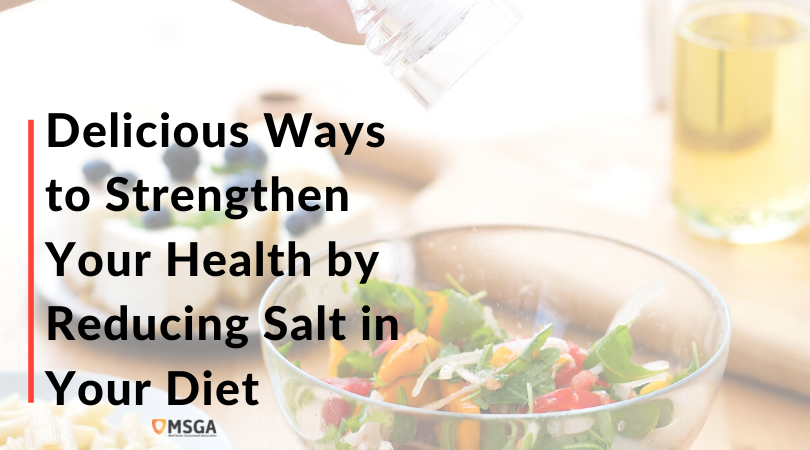If you’re like most Americans, you may be endangering your health by eating an excessive amount of salt. Too much salt can put you at risk for high blood pressure, heart disease, and stroke. Government guidelines recommend no more than 2,300 mg per day of sodium for people over the age of 2. That’s about 1 teaspoon of salt a day. In reality, the average American eats more than 3,400 mg a day, which is about 50% too much. The main culprits are processed and prepared foods which account for about 80% of this total. The good news is that there are steps you can take now to reduce your personal consumption of salt and sodium. There are also things you can do to help ensure that the food industry offers better low-salt options in the future.
Try these simple techniques to cut back on salt without sacrificing flavor:
- Cut down gradually. It has taken many years for Americans to develop their preference for salty foods, but the trend is reversible. If you cut down on salt gradually, you won’t even notice the difference. Eventually, you’ll grow to love the natural flavors of foods.
- Plan your daily diet. If you know that you’ve eaten something high in salt, balance it out by avoiding salt in the rest of your meals and snacks for that day. For example, if you eat a fast food breakfast sandwich, have an oil and vinegar dressed salad for lunch and fish seasoned with garlic for dinner.
- Change the way you use your salt shaker. Rather than adding salt automatically, taste food first to see if it needs more seasoning.
- Learn to read labels. Check the percentage of daily value for sodium on food labels. You may be surprised that some items, such as frozen dinners, that don’t taste salty may contain as much as 50% of the recommendation for a single day.
- Limit your use of convenience foods and processed foods. Processed foods and restaurant meals are often high in sodium. Cook your own pasta and rice instead of using boxed mixes. Eat fresh or frozen vegetables rather than canned vegetables.
- Substitute other seasonings for salt. You can still eat tasty meals by experimenting with other spices. Try cinnamon on carrots, ginger on chicken, and lemon on fish.
- Drink lots of water. Sodium makes your body retain water so the other side of the equation is to drink at least 2.2 liters of water daily for women and 3 liters for men. Drinking water is the best treatment for fluid retention and will help counteract the effects of salty foods.
How to Improve the Availability of Lower-Salt Options In the Future:
- Ask restaurants to leave out the salt. Ask your server or call ahead to request that your order be prepared with no salt. If restaurants see a demand, they may put more low-sodium dishes on their menus.
- Buy reduced-sodium and no-sodium products. Some companies are voluntarily reducing the sodium in their products. Look for lower-salt versions of products such as breakfast cereals and canned goods.
- Let the food industry know you want lower-sodium options. Overall, let restaurants and manufacturers know that you want lower-sodium choices. Support businesses that are working to provide healthier options. Send them an email or leave positive comments on their websites.
Public health experts estimate that cutting back on salt could prevent more than 100,000 deaths annually. It’s easy to lower the sodium in your diet while still enjoying delicious foods, and the health benefits of this one simple change are astounding.

